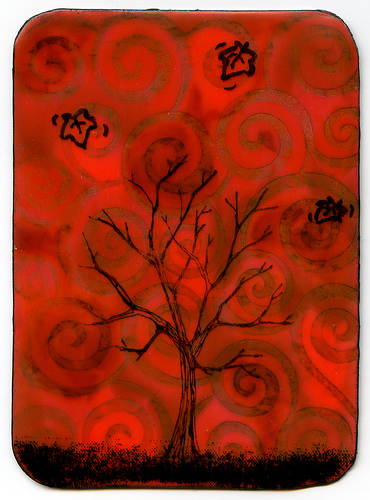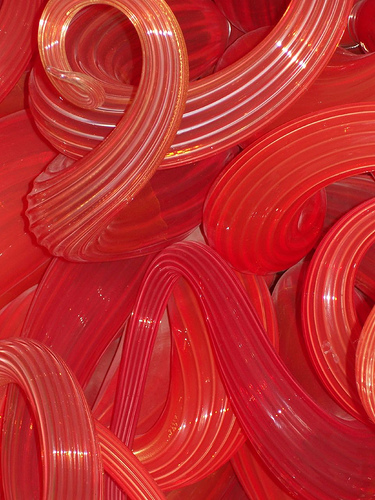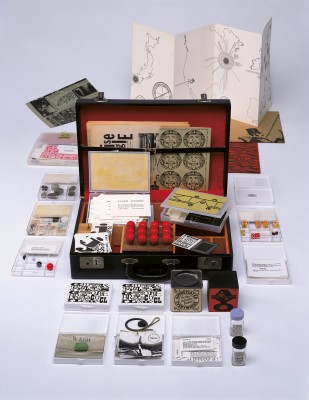 Photo by CraftyGoat
Photo by CraftyGoat 
Ysidora! I’ve been struck by the dialog from your performance:
Your mom throws everything away and that’s why she has no history
She has no history because she is a woman
As you know I’ve been thinking about the magical qualities, the bounded serendipity of Cornell Boxes. Today I was thinking about that lovely collaboration I Send You this Cadmium Red, and another famous collaboration between 2 legendary box guys: Joseph Cornell & Marcel Duchamp’s Duchamp Dossier.
Weather it’s stolen land or a damnatio memoraie from your misogynist brother, we’re 2 dead women who’ve had some of our history erased. Would you care to start a correspondence? We might trade Spanish Land Grants, Cadmium Reds, Duchamp Dossiers, Renaissance Portraits, Lost Journals, or anything else. We could do it right here on react, or I know someone who just loves to make new sites and could set one up for us.
What do you think?
 Photo by Niecieden
Photo by Niecieden 





Vanessa Blaylock 07:49 on 26/09/2014 Permalink |
I think this is an interesting and worthy goal. One thing to note, is that in a way what I’m trying to create is “preciousness” in a time of Abundance. Abundance is a good problem to have, at least compared to the alternative, Scarcity. But in a time of Scarcity, almost anything can be precious. In a time of Abundance, there’s just so much competition for Attention. Entities like Art Galleries and Churches all try to create the experience of Preciousness, and in our time of Abundance, they’ve really got their work cut out for them!
Christa Forster 14:01 on 03/10/2014 Permalink |
Van, I’ve been wanting to comment for several days, but finally I have the time.
Perhaps one of powers possessed by a Cornell box or any precious object in the non-internet world lies in its ability to arrest, to STOP us in time. The object captures us in a way that allows us to experience it in time, but the object itself has a kind of permanence to it, a stasis: the object itself does not change. Because we can return to the object (artwork, album, poem) over and over, we both are relieved by its constancy (not everything changes; what a relief), AND, also, we have time to notice how WE have changed in relationship to the object (artwork, album, poem), and this may be the REAL draw of the physical thing: we are more curious about ourselves and our own lives than we are about the lives of others, and these static objects help make ourselves clear to ourselves.
Who hasn’t felt the “whoosh” effect of FB, or Twitter, or the internet in general — move along, move along, move along — there’s more, always more — to see, to learn, to do, to watch, to read? It’s exhausting! But these static objects — the Cornell, the Beatles’ Sgt. Pepper’s, the epic poem (currently, I’m reading The Odyssey again for the 10th time in 20 years) — do not “whoosh” us along; WE may whoosh, but they restore us; they give us back to ourselves, despite the way the world takes us away from ourselves over and over and over (so like the internet — life). The object’s stasis is the very thing that provides this restoration: it offers us the time and space (constant, reliable) to be moved emotionally — at our own pace, in the directions we choose (or that our unconscious minds choose).
The internet moves similarly to the way the unconscious mind moves, but I think we feel that we’re being moved from without rather than from within, and this makes all the difference.
Vanessa Blaylock 11:05 on 26/09/2014 Permalink |
Objects
Although I am a Documentation nut, I am not a Object maker. My work is in Ephemeral Experiences. Hopefully these are engaged and immersive experiences. Participants at these experiences may have some of the “Box” like experiences I’ve described. I do wonder if my yearning for this “Box” like experience isn’t a sort of desire to turn the ephemeral experience of performance art, or cyberspace, into a sort of virtual object?